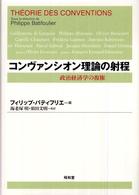基本説明
Defines the current state of knowledge of botulinum toxin and how this compound fits into the various overall treatment algorithms.
Full Description
Justinius Kerner, a German medical officer and poet, was the first to realize that botulinum toxin potentially might be useful for therapeutic purposes. Kerner made this observation in 1822, but he did not call the toxin "botulinum toxin. " Instead, Kerner called it the substance in "wirkenden stoffes," which translates to "bad sausages. " Kerner realized that there was a "fat poison" or "fatty acid" within sausages that produced the toxic effects that we now know as botulism. Nearly a century would pass before the bacterium producing the toxin would be isolated and the toxin ultimately renamed "botulinum toxin. " As farsighted as Kerner was, it is doubtful that even he could have predicted just how much potential therapeutic punch was packed within his wirkenden stoffes. It was not until 1978, more than a century and a half after Kerner's prediction, that Dr. Allan Scott received Food and Drug Administration approval to test botulinum toxin type A in human volunteers. We do not yet have a comprehensive understanding of precisely how botulinum toxin works in the human body or how our bodies fully respond to the toxin. We do know that it temporarily paralyzes muscle by inhibiting the release of acetylcholine, and it also appears to inhibit the release of other neurotransmitters.
Contents
History and Mechanism of Action.- Spasticity.- Radiation Fibrosis Syndrome.- Low Back Pain.- Piriformis Syndrome.- Plantar Fasciitis.- Headache.- Spasmodic Dysphonia.- Sialorrhea and Frey's Syndrome.- Cosmetic Applications.- Hyperhydrosis.- Urological Applications.- Gastrointestinal Applications.- Blepharospasm.- Economics, Immunity, and Future Directions.








